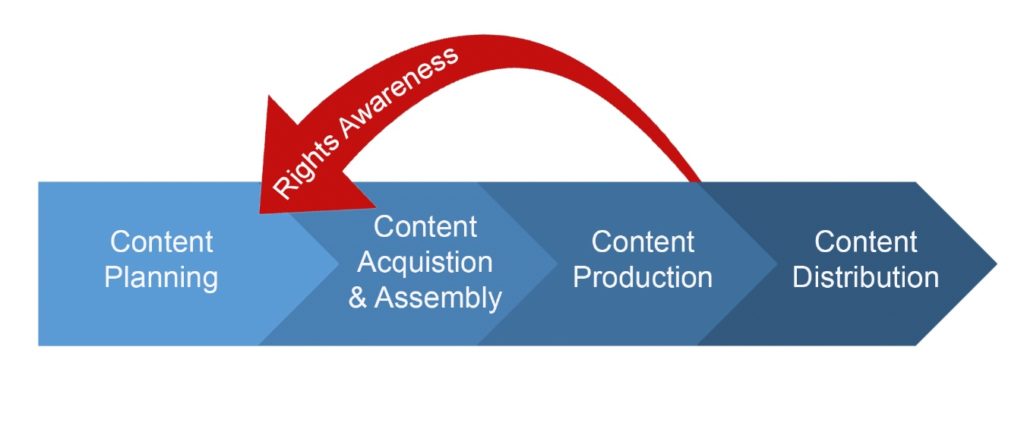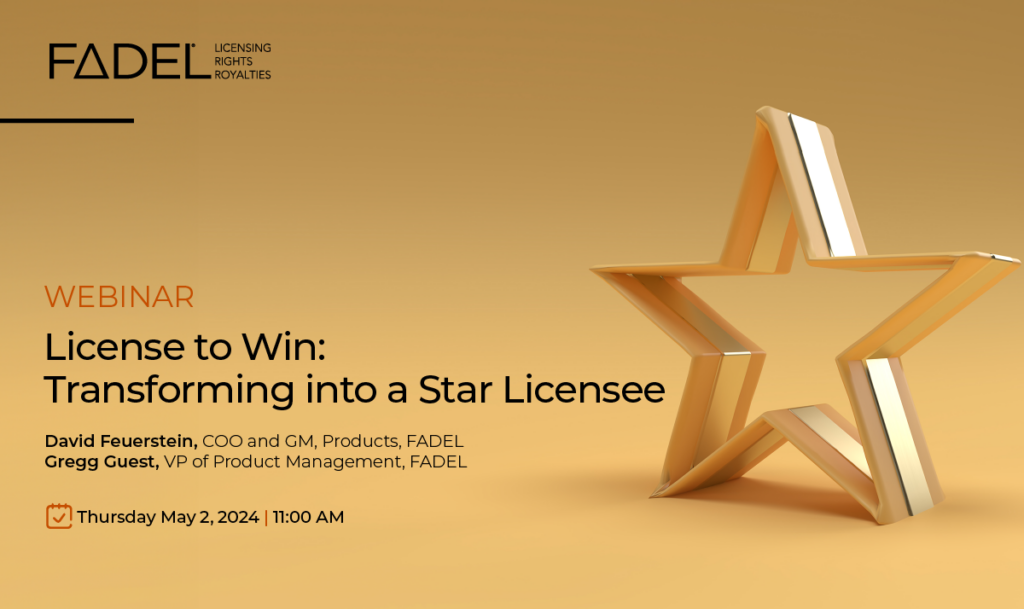
Importance of Automating Rights & Permissioning during Content Planning
How the Publishing Industry Has Transformed

Over the past decade, which could be declared the “digital decade,” the publishing industry has seen a massive content transformation – from its makeup to its delivery format to distribution channels to consumption models. Just think about how the emergence of smart devices, e-books and online subscriptions have transformed how we read and consume published materials.
The traditional book has now evolved into sophisticated aggregate content:
- Master content may be made up of multiple pieces of content that are in a variety of formats such as text, images, and video. For example consider a digital magazine or a textbook that contains images, graphs and quotes drawn from other sources.
- Content may be grouped together for specific projects, such as an educational packet that includes a textbook, video and interactive quiz.
- Content elements may be shared across programs or books. An example of this is the educational material for a course that may include both a Teacher’s Guide and a Student’s Guide, each with overlapping material.
So the content planning effort has certainly grown in its complexity and in its importance for all publishers. After all, it is this innovation that further a publisher’s mission to attract readers and content contributors and stand out against the competition.
What is Rights & Permissioning for Publishers?
With effective content planning comes the need for effective rights and permissioning processes. Not only is there the notion of sharing and reusing content elements, but these elements are in different formats and have different contractual rights based on geography, format, usage, language, timeframe and more. In order to plan content without overspending, you need to know what you already have in your wheelhouse and its rights. In order to acquire new content, you need to gain the right rights and build that into the project schedule and budget.
This process of “checking rights” is often a pre-production activity as the content is assembled and often outsourced. But this can be too late. While it does ensure legal compliance, doing the rights check or clearance check too late can hinder the content selection process, increase the time to market and increase the overall acquisition spend.
A popular trend for many large publishers is to move and tightly integrate the rights management process into the content selection process. Why?
- Publishers gain full visibility into the repository of existing content in order to maximize reuse and ultimately reduce unnecessary spend
- The lifecycle from ideation to distribution is optimized because you have eliminated an extra stage that can potentially drive re-work
- Publishers can reach the right balance of creativity and budget from the start of the project

Benefits of Integrating Rights Awareness into the Content Selection Process
By integrating rights awareness into the content selection process, publishers improve efficiencies, reduce costs and put the right controls in place to govern their process. Let’s break that down further by looking at 5 significant benefits.
- Compliance – This is the basic objective of any rights platform. It involves knowing the rights you have on your assets, how they are defined, quantity limitations and timeframe restrictions. A rights management process and platform will proactively protect from the misuse of licensed content in the following ways:
- Avoid using content with expired or soon to be expired licenses.
- Avoid content misuse according to the contract terms (eg – using a print-only license in a digital format).
- Understand if the sales or printing of the products has exceeded defined usage limits.
- Look to see if sales are forecasted to exceed license limits in order to plan for the needed acquisition.
- Have awareness of when talent releases are required and manage the process of securing the releases.
- Obtain license agreements for new markets the business plans to go after.
- Traceability – Know the connection between the products you create and the content components that make it up. Having this information available, combined with knowing their “already acquired” rights, will make it possible to improve discoverability, maximize reuse and minimize costs.
- It is important to understand what content is used in the product overall and in each version over time. Versioning over time will allow you to replace new assets.
- By knowing the relationship between content and product and by knowing the rights for the content, you can then model new versions of the product to test against the desired use.
- Knowing what content you have and how you can use it empowers you to reuse more often across future products, projects and markets while adhering to any restrictions for use.
- There are some products that need fresh, new, innovative content, while others can benefit from reuse. Visibility into your content and its rights allow you to avoid re-purchasing rights for what you already had the licenses to.
- Speed to Market – With a platform in place that connects rights to content development, the process of clearance can occur upfront during content planning and therefore eliminate the need for an expensive and time-consuming process to ‘clear rights’ for products. The process is also made more efficient because you are able to streamline the content plan to be against multiple, related products. Ultimately publishers are able to substantially decrease production times.
- Flexibility – By building ‘rights awareness’ in during content selection, we not only speed the process but we build flexibility into the content planning process. If you can clear content in chunks or incrementally, rather than just as a whole, you get greater visibility into what’s available for reuse and what’s needed for acquisition. As publishers innovate and move to digital the structure is more malleable and so you need a process and tools that can allow for that flexibility.
- Reduce Costs – Content development teams need to work to a budget and often a later stage ‘rights clearance’ process can drive the costs up. By moving clearance earlier in the lifecycle you shorten production, improve flexibility and ultimately reduce overall costs in a number of ways:
- There is no longer the unintentional buying of rights for content or permissions that you already have.
- By making the process of acquiring the licenses more efficient, the internal cost of acquisition is reduced. There is often an aggregate cost of labor to manage the licensing of assets, which can be as high as licensing the asset itself. One example of this is when working with content that needs to be very carefully curated — such as an asset from a prestigious photographer’s collection that has very specific attributes and rights. There is more attention and labor required to acquire the asset just right. A recommended best practice is to create a Center of Excellence for such high touch assets.
- Managing the licensing process manually can be quite challenging and time-consuming to find the proper agreement, match the desired asset use against the proper rights definition, and factor in discounts and geographic constraints for preferred vendor agreements. By automating the rights management process you make the overall process more cost-effective.
- Content creators can negotiate better pricing on assets that come from preferred vendors by leveraging real-time price calculators to inform on the options. By not wasting time on assets that are too expensive creators can better manage to a budget and speed their overall process.
- Moving the process of clearance to be concurrent with content planning and selection will better optimize the lifecycle from idea to execution and reduce overall costs.
- Better compliance controls upfront will reduce asset rejections that happen when the book is audited for publication, thereby eliminating the cost of rework which often drives delays and can take a project over budget.
- The improved results of better compliance controls may even drive down the rates for a publisher’s indemnity insurance.
How to Setup an Integrated Rights and Content Platform
Getting rights associated with content at the time the content is authored and/or assembled is important. To set up an integrated rights and content platform here are some key best practices for strategic planning, process optimization and management:
Strategic Planning:
- Define your Rights “language” to enforce consistency across departments and licensors by creating a global rights model with a uniform taxonomy.
- Manage to your Rights goals by establishing an organizational discipline of knowing the rights, quantities and timing needed for the product and using that to drive the needed acquisitions. For example, buy all of the assets for a product for the same set of terms.
Optimize Content Acquisition:
- Leverage content reuse as a strategy in the right circumstances. If you already have a lot of content in place it would be of benefit to integrate your lightboxing/discovery process with your rights availability process.
- When acquiring content it is a best practice to establish preferred vendors relationships and pricing to improve the cost and speed of the decision-making process.
- When processing content acquisitions at volume, it is recommended to develop a Center of Excellence for high touch assets that need to be curated very carefully and are often the most valuable, strategic or critical assets.
- Integrate license acquisition with your procurement platform for POs and Accounts Payable to make the process frictionless. For example, generate POs and automatically submit them through to vendors.
Manage Rights:
- Generate sales usage reporting so that compliance can be checked. It is important to know the association between products and content elements in order to cross-reference rights for content elements with product sales and usage.
- Leverage a project-based approach to manage the Rights ecosystem including team management, defining roles and responsibilities, creating competencies, bot-based operations, and identifying critical milestones.
In Summary
In today’s digital world content planning is complex and strategic and therefore automating the rights & permissioning process becomes even more critical as well as integrating it into the content selection process. With a rights and permissioning system to manage the process, publishers are able to mitigate compliance risks, improve traceability, increase speed to market, gain flexibility in content planning, and reduce overall costs.









